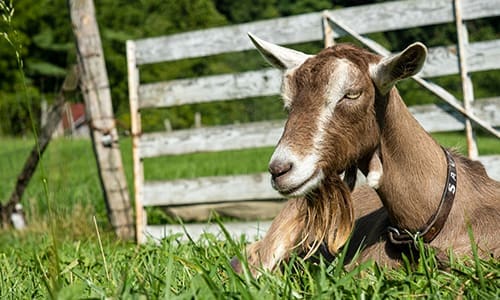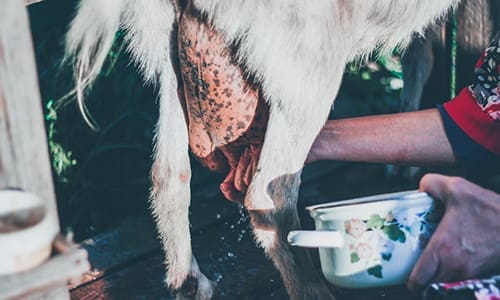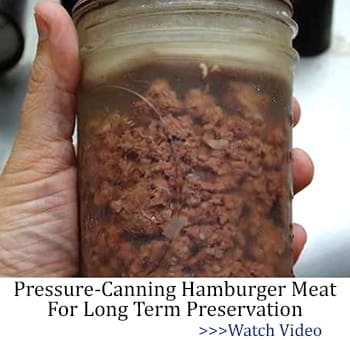I know in most parts is spring already, but it’s never too early to prepare for the upcoming winter months.
Last year, as I prepared for the cold season, I started two projects to help me survive the colder months. In this article, I will discuss the one project that was worth my while and was a wise financial and nutritional decision!
When it comes to homesteading, one of the best investments is livestock.
If your homestead is large enough, buying animals such as cattle, sheep, or pigs can be a great way to ensure you have enough food to survive the entire year. Poultry, such as chickens and ducks, can also be an excellent investment. However, ducks require more maintenance and care than I had initially imagined and become more of a hassle than you expected. Therefore, researching and preparing for the challenges of having poultry on your homestead is essential.
When evaluating the success of a project, it’s essential to consider both the financial cost and the time commitment. It’s important to determine whether the project saved you money and how much money it saved you. But it’s also important to be realistic about how much time you spend on the project. If the task is too time-consuming, it might not be worth it, even if it does save you money.
Last spring, I bought two pregnant Toggenburg ewes, a dairy goat breed.

The Goats
Toggenburgs usually have twins, and both of my ewes had twin kids – one buck and one doe each. I was happy with my purchase because I could get twice the amount of goats for the same price as one. Having more goats also meant more milk and cheese for my family.
In addition to being a potentially fruitful project, having the Toggenburgs is also a lot of fun.
Toggenburgs are intelligent and playful animals, and the kids my ewes had were no exception. They were great to interact with and entertain the whole family. Plus, once the kids matured, I could again milk the ewes and potentially eat or sell the bucks.
Remember that you cannot harvest milk while the ewe is nursing her kids. Fortunately, Toggenburgs are unique and have the added benefit that the ewes can be milked almost indefinitely once the kids have been weaned, meaning that there’s always a steady supply of milk and cheese for us to enjoy.
I bought the ewes when they were four months pregnant. They had their kids after one month, and I weaned them at three months. So I had two months to prepare them and sort out my milking routine before autumn set in.
Related: The Dos And Don’ts Of Buying Livestock

Once I had weaned the kids, I started milking my Toggenburgs twice a day, getting nearly a gallon of milk daily. The time spent milking was about 30 minutes in the morning and 30 minutes in the evening. Keeping the kids away from their mothers after weaning is essential because they may sometimes try their luck at nursing even after weeks of separation.
I also want to mention a few lessons I learned, pitfalls for you to avoid, and steps to ensure a steady flow of wholesome milk.
The Lessons I Learned
- The feed determines the taste. I experimented with pellets but eventually settled for crushed maize and alfalfa hay. Recommendations are that goats not receive more than 10 oz of crushed maize daily. I was feeding my ewes 14 oz while milking in the morning and 14 oz in the evening. It boosted milk production and taste, and the ewe gained condition over time. Be sure to introduce the maize over time, starting with around 3.5 oz and increasing daily up to the limit. Do not do it all once, as you will disrupt the bacteria of the rumen! You have been warned!
- You must wash the udders before and after milking, and be sure to dry the udders well. Apply a milking salve to keep the skin soft and supple. You will soon realize that these udders are of significant financial value and should be maintained.

- Ensure that the sleeping area is well-ventilated and dry. I started getting a bad taste in the milk, and after some research, I realized it could be due to too much ammonia being breathed while sleeping. I kept the goat’s sleeping quarters clean and as dry as possible, and the milk quality improved.
- Drench with a multivitamin. Toggenburgs can produce a lot of milk and use many physical resources to do this. Malnutrition can quickly occur right under your nose without you even realizing it. Bolster them with multivitamin drenches. I also used an injectable form of vitamin B12 with additional amino acids. The milk quality improved, and the goats were livelier once I started injecting them once every two weeks.
- Make sure you milk them on a custom-built milk stand or maybe even on a few pallets stacked one on the other. I have trained my goats now to eat all the time while milking, and there is no longer any need to tether them.
There are some excellent ideas for milking stations on YouTube and other places on the web, but the ewes eventually stand and eat.
Related: 7 Domestic Animals That Are Too Easy To Raise

- Make sure you castrate all male animals you don’t intend to use for breeding. I waited too long and then decided to sell them as rams. I got very little for the males when I sold them and would have gotten more had I castrated them. I didn’t know then, but ram’s meat is full of male hormones, making the taste unpleasant.
The Financial Approach
I have calculated the cost of feed and the yearly cost of vaccinations, and having your dairy goats is a sound investment.
Return on capital investments was recuperated in the first four months of milk production, excluding money spent on feed. In addition, I have two young ewes in reserve, which I can sell or put into production. Toggenburg goats can produce milk up to 6 or 8 years of age, or even more if they are looked after well. In addition, milk production should increase as the ewes mature.
I am writing this article from South Africa, and my monthly spending on feed and other costs like deworming for the ewes would buy around ten days’ worth of milk. I have a large property, so they can eat as much as they want. I only supplement with maize and alfalfa and some vitamins. I would recommend this as a worthwhile project.
Also, Toggenburgs are the oldest breed of goat. Therefore, the ewes can be kept in small pens if they need to stay inside during the winter without too much stress. Furthermore, years of selection in the snowy alpine conditions from where they originate are selected for content animals when they cannot roam.
So there you have it, friends. Get some dairy goats. It was one of the best things I have ever spent money on.
You may also like:
How to Butcher Game and Livestock (Video)
Best And Worst Livestock For Homesteaders
6 Small Animals You Can Raise On Your Property
Livestock Animals You Should Start Raising For The Upcoming Economic Crisis









